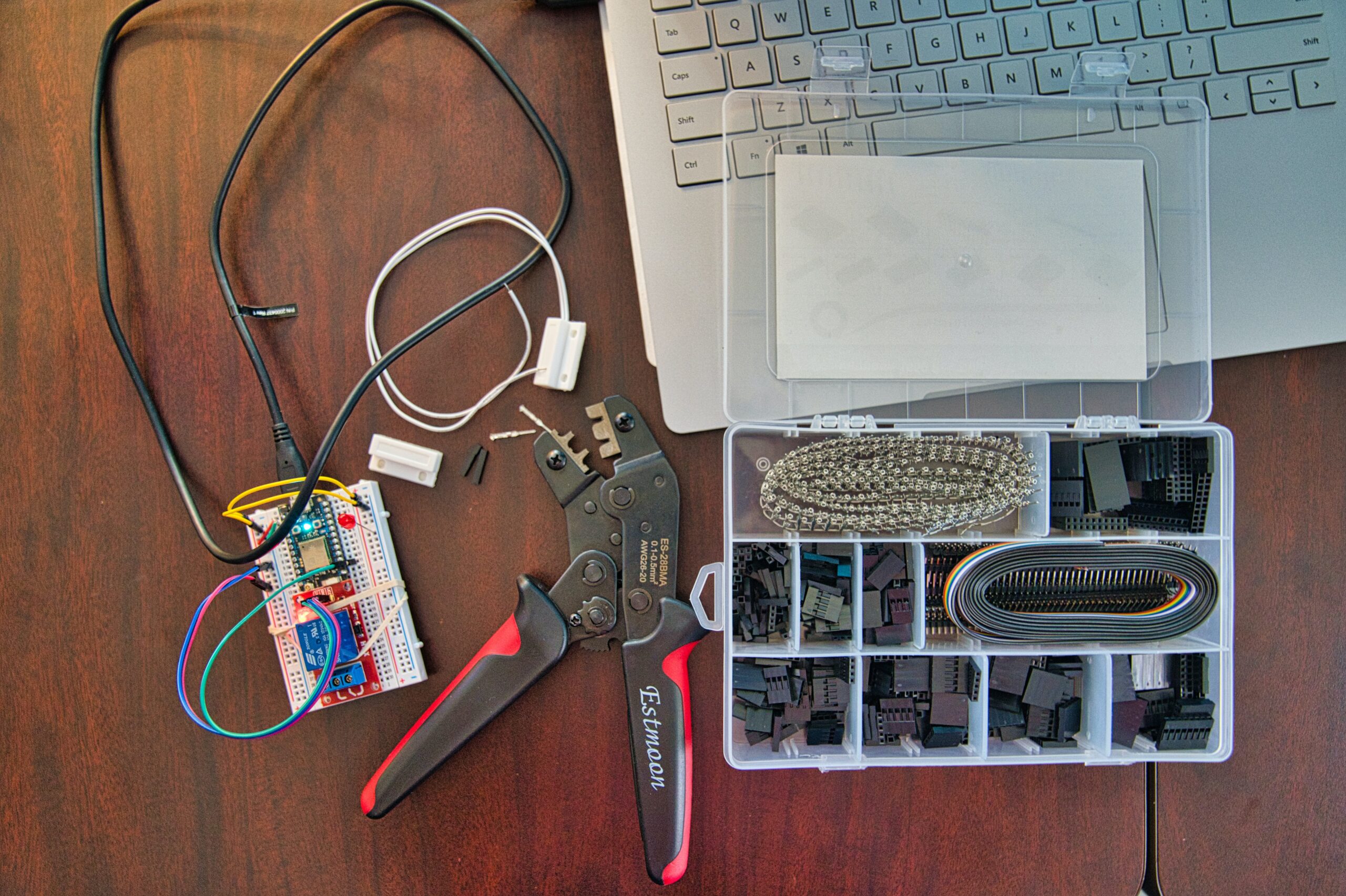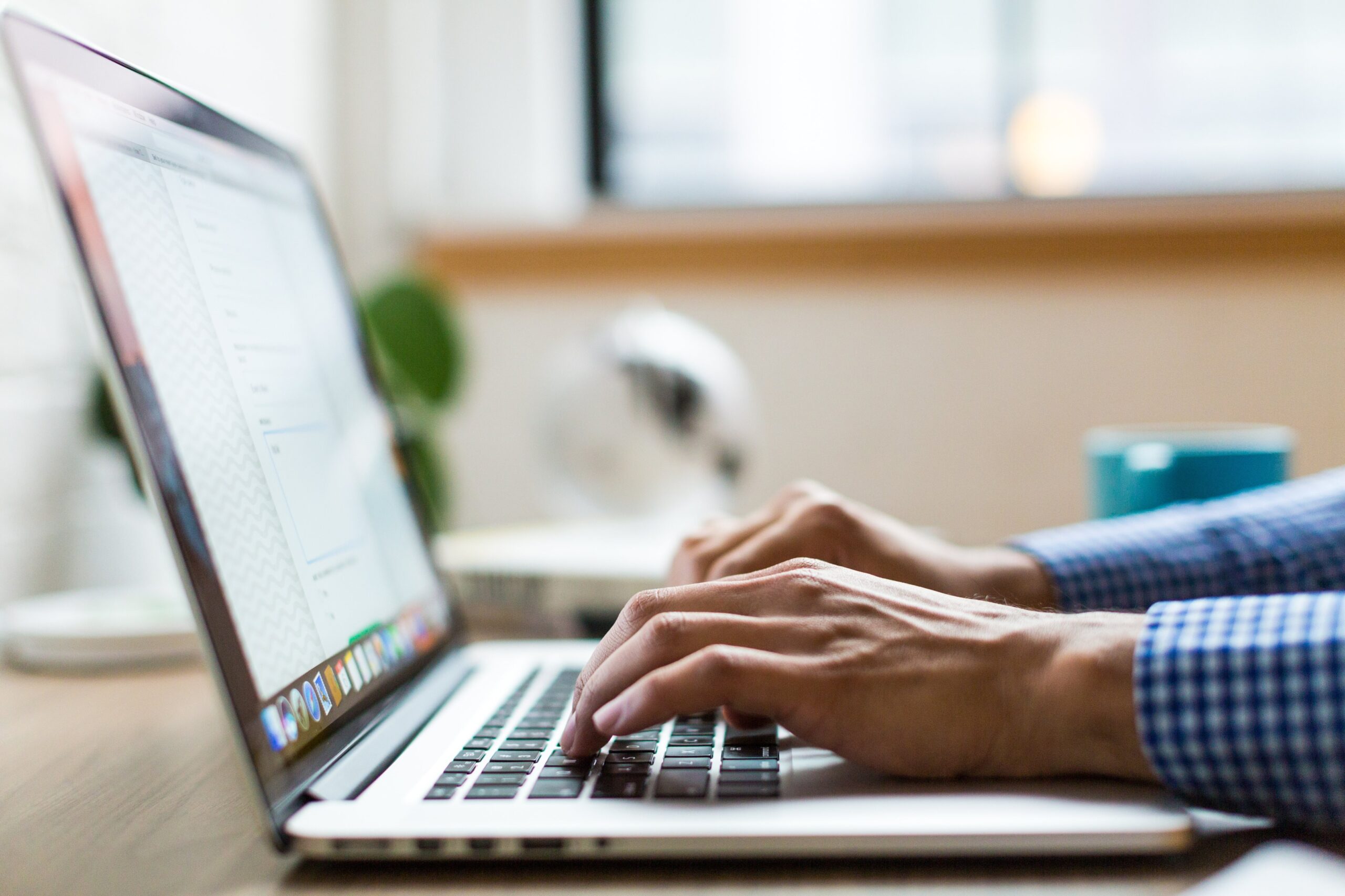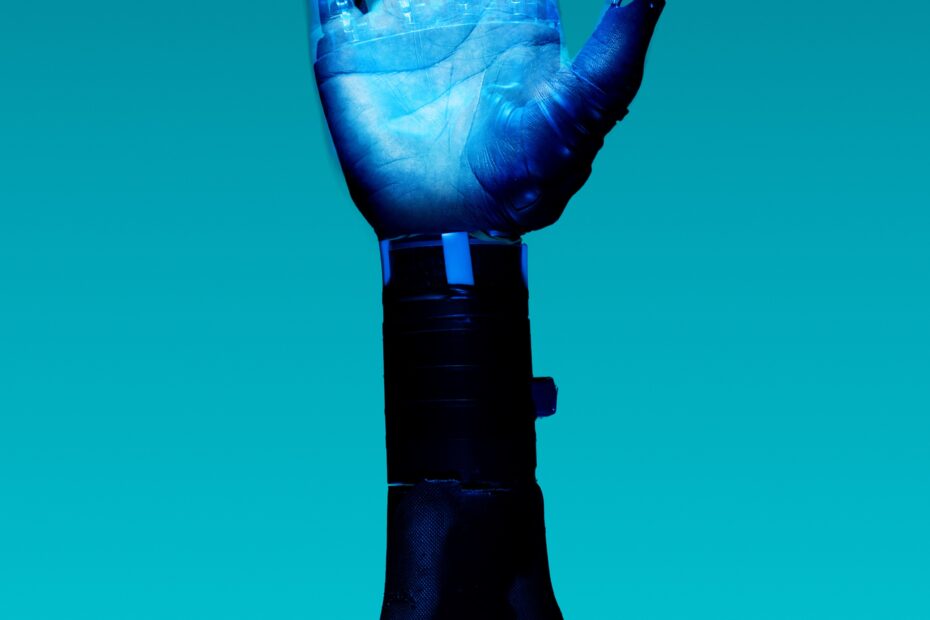







Have you ever wondered if you can use your tablet as a second screen for your laptop? Maybe you need more screen space for multitasking or want to extend your work area. Well, the good news is that it is indeed possible to use your tablet as a second screen for your laptop. This article will explore the different methods and tools available to connect your tablet to your laptop, providing you with the flexibility and convenience of a dual-screen setup. So, if you’re ready to boost your productivity and make the most out of your devices, let’s dive into the world of using a tablet as a second screen for your laptop!

Understanding the Use of a Tablet as a Second Screen
The concept of dual screens
Dual screens refer to the use of two displays simultaneously, allowing users to extend their workspace and increase productivity. This concept has gained popularity in recent years, as it provides a convenient way to multitask and access multiple applications simultaneously. One way to achieve dual screens is by utilizing a tablet as a second screen for a laptop.
Benefits of using a second screen
Using a second screen, such as a tablet, with your laptop offers several advantages. Firstly, it provides an expanded workspace, allowing you to work on multiple applications or documents side by side. This improves efficiency and reduces the need for constant window switching. Additionally, a second screen enables you to keep important information, such as reference materials or communication tools, readily accessible on one display while working on another.
Can a tablet serve as a second screen for a laptop?
Yes, a tablet can function as a second screen for your laptop. By utilizing certain software applications or establishing a physical or wireless connection between the tablet and laptop, you can extend your laptop’s display onto the tablet screen. This versatile solution provides flexibility and convenience, allowing you to make the most out of your tablet as an additional screen.
Various Methods to Use a Tablet as a Second Screen
Using software applications
Numerous software applications are available that enable you to use your tablet as a second screen. These applications utilize your device’s wireless connectivity to establish a connection between your tablet and laptop. Some popular options include Duet Display, iDisplay, and Splashtop Wired XDisplay. These applications usually require installation on both devices and offer customizable settings to optimize the dual screen experience.
Using physical connections
In addition to software applications, you can also use physical connections to connect your tablet and laptop. This method involves using appropriate cables and adapters to establish a wired connection between the two devices. A typical setup would involve using an HDMI or VGA cable, along with an adapter for the tablet’s specific port. While this method may require additional equipment, it offers a reliable connection and eliminates the need for a stable wireless network.
Using wireless connections
Wireless connections offer a convenient way to use your tablet as a second screen without the need for physical cables. These connections utilize Wi-Fi or Bluetooth technology to establish a link between the tablet and laptop. By enabling screen mirroring or extending the display in the laptop’s settings, you can wirelessly transmit the laptop’s screen onto the tablet. However, it is important to ensure a stable network connection to avoid delay or lag during usage.
Considerations Before Using Your Tablet as a Second Screen
Tablet’s screen size and resolution
Before using your tablet as a second screen, it is essential to consider its screen size and resolution. While smaller tablets may still serve as a second screen, larger tablets generally offer a more comfortable viewing experience. Additionally, ensure that the tablet’s resolution is compatible with your laptop’s display settings to avoid any issues with image quality or scaling.
Compatibility with your laptop
Another crucial factor to consider is the compatibility between your tablet and laptop. Ensure that both devices are running on compatible operating systems and that their hardware specifications meet the requirements for establishing a second screen connection. Additionally, some software applications or wireless connection methods may have specific compatibility requirements, so it is important to check the compatibility guidelines before proceeding.
Performance impact on both tablet and laptop
Using a tablet as a second screen may have a performance impact on both the tablet and laptop. Running dual screens requires additional processing power and resources from both devices, which may result in decreased performance or increased battery drain. It is advisable to close unnecessary applications, optimize settings, and monitor performance levels to ensure smooth usage and prevent excessive strain on the devices.
Setting up Your Tablet as a Second Screen Using Software Application
Installing the software
To set up your tablet as a second screen using a software application, you first need to install the desired software on both your tablet and laptop. Visit the application’s official website or app store to download and install the software. Ensure that you have the latest version of the software to access all the available features and updates.
Configuring the settings
Once the software is installed on both devices, you need to configure the settings to establish the second screen connection. Open the application on both your tablet and laptop, and follow the on-screen instructions to connect the devices. Depending on the software, you may need to adjust various settings such as screen resolution, orientation, touch input, and display alignment to ensure optimal dual screen functionality.
Connecting the tablet and laptop
After configuring the settings, you can establish the connection between your tablet and laptop. Ensure that both devices are connected to the same Wi-Fi network or paired via Bluetooth, depending on the software requirements. Follow the application’s instructions to connect the devices securely. Once connected, your tablet should start functioning as a second screen for your laptop, allowing you to extend or mirror the display based on your preferences.

Using Physical Cable to Connect Your Tablet and Laptop
Types of cables you can use
When using a physical cable to connect your tablet and laptop, you have several options depending on the available ports on both devices. Common cable types for establishing a wired connection include HDMI, VGA, DisplayPort, and USB-C. Select a cable that matches the available ports on your tablet and laptop. If necessary, you may also need to consider using adapters or converters to ensure compatibility between different port types.
Steps to set up a wired connection
To set up a wired connection between your tablet and laptop, follow these steps:
- Power off both devices and ensure they are not connected to any power sources.
- Identify the appropriate ports on both the tablet and laptop for connecting the cable.
- Plug one end of the cable into the corresponding port on the tablet and the other end into the laptop’s port.
- Power on both devices and wait for them to recognize the wired connection.
- To enable the second screen functionality, go to your laptop’s display settings and select the appropriate display mode (extend or mirror).
Potential issues and how to troubleshoot
While setting up a wired connection, you may encounter some potential issues. Here are a few common ones and their possible solutions:
- “No signal” error: Ensure that the cable is securely connected to both devices and that the correct input source is selected on the tablet.
- Unsupported resolution: Adjust the display settings on both devices to match their resolution capabilities.
- Display not appearing on the tablet: Check the tablet’s input settings and ensure that the appropriate display mode is selected on the laptop.
If you encounter any other issues, consult the manufacturer’s guidelines or support resources for specific troubleshooting steps.
Establishing a Wireless Connection Between Your Tablet and Laptop
Benefits of a wireless connection
Using a wireless connection between your tablet and laptop offers several benefits. Firstly, it eliminates the need for physical cables, providing greater flexibility and convenience. Wireless connections also allow for mobility and freedom of movement, enabling you to use your tablet as a second screen from various locations within the network range. Additionally, wireless connections are generally quick to set up and do not require additional equipment.
How to set up a wireless connection
To establish a wireless connection between your tablet and laptop, follow these general steps:
- Ensure that both devices are connected to the same Wi-Fi network.
- On your laptop, access the display settings and look for the “Connect to a wireless display” or similar option.
- Select your tablet from the list of available devices.
- Accept any prompts or verification requests from both devices to establish the connection.
- Once connected, configure the display settings on your laptop to extend or mirror the screen onto the tablet.
Specific steps may vary depending on the operating systems and devices involved. Refer to the manufacturer’s documentation or online support resources for detailed instructions for your particular tablet and laptop models.
Overcoming common wireless connection issues
While setting up a wireless connection, you may encounter some common issues. Here are a few tips to help overcome them:
- Ensure both devices are connected to the same Wi-Fi network and have a stable network connection.
- Restart both devices and try reconnecting.
- Update the operating system and device drivers to the latest versions to ensure compatibility and improved connectivity.
- Make sure there are no physical obstructions blocking the wireless signal between the tablet and router.
If you continue to experience issues, contact the manufacturer’s support for further assistance or explore alternative methods of connection.

How to Optimize Your Tablet for Use as a Second Screen
Adjusting screen resolution
To optimize your tablet as a second screen, it is important to adjust the screen resolution. Ensure that the tablet’s resolution matches or is compatible with your laptop’s display settings. You can adjust the resolution in your device’s settings or display preferences. Higher resolution settings generally result in sharper and more detailed visuals, while lower resolutions may affect image quality.
Optimizing tablet’s battery life
Using a tablet as a second screen may have an impact on its battery life. To optimize battery usage, consider adjusting settings such as screen brightness, screen timeout, and background app activity. Lower screen brightness, shorter screen timeout durations, and limiting background app activity can help conserve battery power. Additionally, consider connecting the tablet to a power source or using power-saving modes when feasible.
Managing apps to improve performance
To improve performance while using your tablet as a second screen, it is advisable to manage and optimize running apps. Close unnecessary apps and processes that may consume resources or cause lag. Keep the tablet’s operating system and applications up to date to benefit from performance improvements and bug fixes. Additionally, regularly clear cache and temporary files to free up storage space and maintain efficient performance.
Benefits of Using a Tablet as a Second Screen
Boosting productivity
Using a tablet as a second screen can significantly boost productivity. With an extended workspace, you can have multiple applications or documents visible simultaneously, reducing the need for constant window switching. This allows for seamless multitasking, improved efficiency, and smoother workflow. Whether you’re a professional working on complex tasks or a student managing research and assignments, a second screen can help enhance your productivity.
Expanded workspace
One of the primary benefits of using a tablet as a second screen is the expanded workspace it provides. The additional screen real estate allows for a more immersive computing experience, enabling you to spread out your work, organize information, and view content side by side. This proves particularly useful for tasks that require reference materials, such as coding, graphic design, video editing, or financial analysis.
Facilitates multitasking
Multitasking becomes easier and more efficient when you have a tablet as a second screen. Whether you need to compare documents, monitor social media feeds, track emails, or keep an eye on project status, having a dedicated second screen allows for seamless switching between tasks. By keeping different applications visible at the same time, you can quickly access and manage various tasks without losing focus or wasting time.
Limitations and Challenges of Using a Tablet as a Second Screen
Limitations in screen size
One of the primary limitations of using a tablet as a second screen is its screen size. While tablets come in different sizes, they are generally smaller than dedicated computer monitors. This may limit the amount of content visible at once and potentially increase the need for scrolling or adjusting window sizes. If you require extensive multitasking or work with applications that require significant screen real estate, consider using a larger secondary monitor for a more comfortable experience.
Reduced performance on the tablet
Using a tablet as a second screen may impact its overall performance. Running dual screens consumes additional processing power, RAM, and battery resources. This may result in decreased performance on the tablet, leading to slower app response times, increased heat generation, or shorter battery life. To mitigate these effects, optimize your tablet’s settings, close unnecessary apps, and monitor performance indicators to ensure smooth usage.
Potential connectivity issues
Connectivity issues can present a challenge when using a tablet as a second screen. Wireless connections, in particular, may be affected by factors such as distance from the router, network congestion, or interference. This can lead to lag, screen freezing, or even complete disconnection. To minimize connectivity issues, ensure a stable Wi-Fi network, keep devices within a reasonable range, and reduce interference from other devices or structures.
Alternatives to Using a Tablet as a Second Screen
Using a dedicated secondary monitor
If using a tablet as a second screen poses limitations or is not feasible for your needs, consider using a dedicated secondary monitor. Extra monitors offer a larger screen size, better resolution, and enhanced connectivity options. This can provide a more seamless dual screen experience, especially for professional tasks or creative endeavors that require extensive visual workspace.
Using a television
In certain scenarios, utilizing a television as a second screen can be a viable alternative. TVs often offer larger screen sizes compared to tablets and can be connected to laptops using HDMI or other compatible ports. While not as portable or feature-rich as tablets, a television can offer a cost-effective solution for those seeking a larger dual screen experience.
Using a projector
For situations that require a large display or temporary dual screen functionality, using a projector can be an alternative option. Projectors can project the laptop’s screen onto a wall or projection screen, effectively extending the display area. While projectors offer flexibility in terms of screen size and viewing distance, they may have limitations in terms of image quality, portability, and accessibility compared to tablets or dedicated monitors.
In conclusion, the use of a tablet as a second screen for a laptop provides numerous benefits, such as an expanded workspace, improved productivity, and seamless multitasking. By utilizing software applications, physical connections, or wireless connections, you can easily set up and optimize your tablet for a dual screen experience. However, it is essential to consider factors such as screen size, compatibility, and performance impact before using your tablet as a second screen. Additionally, alternative options such as dedicated monitors, televisions, or projectors can provide different solutions based on individual needs and preferences. Ultimately, with the right setup and considerations, using a tablet as a second screen can significantly enhance your computing experience.




